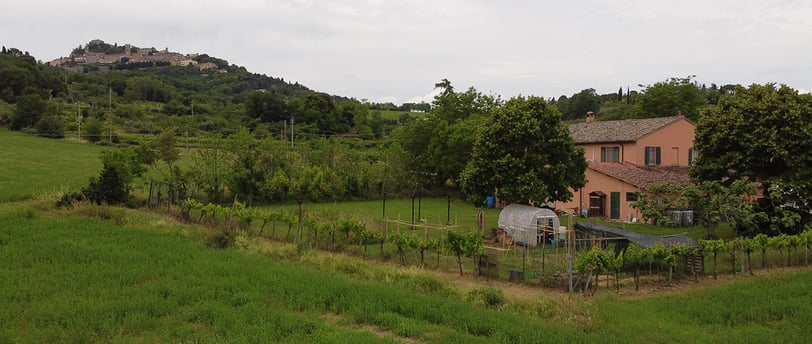From the Earth to the Table
Practical Guide to a Self-Sufficient Vegetable Garden at La Casa del Lago
1/22/20253 min read


Organization and Starting a Vegetable Garden:
• Size: Starting with a small garden is essential, especially for beginners. This allows better focus, manageable activities, and gradual learning. It’s advisable to begin with something easily controllable and expand later if desired. Even for those with experience, focusing energy rather than increasing surface area is more effective.
• Plant Selection: Choosing easy-to-grow vegetables is a wise strategy, especially at the beginning. Examples include garlic, onions, potatoes, lettuce, chard, zucchini, and green beans. Researching which plants grow best in your area and seeking advice from local growers is always a good idea.
• Soil Preparation:
◦ Enrich the soil with compost, aged manure, or vermicompost to improve fertility and help plants grow healthy and strong.
◦ Consider mulching to retain moisture and reduce weed growth.
◦ Conduct soil tests to understand its composition and pH. The ideal soil is loamy-sandy, but many types can be cultivated, especially with the no-dig method, which avoids deep soil tillage and relies on adding a layer of compost.
• Composting: Setting up a composting system to transform organic waste into fertilizer is beneficial. A system with at least three separate areas is useful for a medium-sized garden. Pre-made compost, such as mushroom compost, can also be purchased.
• No-Dig Method: This approach, which avoids soil tillage, is effective for reducing weeds and improving soil fertility. It involves adding a layer of compost annually.
Garden Management:
• Pests and Diseases: Being prepared for pests and diseases is crucial. Use natural prevention methods like introducing predator insects (e.g., ladybugs for aphids) and applying plant-based sprays. Install insect-proof nets to protect plants.
• Crop Rotation: Avoid planting the same crops in the same spot repeatedly to reduce the risk of pests and diseases.
• Companion Planting: Growing different vegetables in the same area can benefit plant growth and health.
• Plant Care: Regularly monitor plants and address their needs, such as watering consistently while avoiding waterlogging. Prune when necessary to prevent energy accumulation issues and thin out plants to provide space and light.
• Harvesting: Pick produce when it is ready and schedule staggered planting and transplanting to ensure continuous production.
• Tools: Invest in high-quality tools, such as compost forks, hoes, rakes, and shovels, to make work easier. A good irrigation spade with a straight angle is preferable to curved ones.
Costs:
• Costs vary based on the size of the garden, the quality of tools, and the amount of material purchased. A soil test costs around €40, while garden tools can range from €45-50 to €100 or over €250. Starting small and gradually investing is a good strategy. Home composting significantly reduces costs.
Regional Differences and Practical Tips for Italy:
• Climate and Weather: Different Italian regions have distinct climates and microclimates. For instance, you cannot plant the same vegetables in March in Lombardy and Sicily. Choosing local varieties suited to your climate is essential.
• Sunlight Exposure:
◦ In general, vegetables need at least 6 hours of direct sunlight daily.
◦ In northern regions with fewer daylight hours, orienting rows north-south can maximize sunlight exposure.
◦ In southern regions, protect plants from intense midday sun with shade nets if needed.
• Soil Structure:
◦ Clay Soils: Retaining a lot of water, they may need better drainage. Adding sand and organic matter improves the structure.
◦ Sandy Soils: Tend to lose water quickly, requiring more frequent watering. Adding compost improves water retention.
◦ Loamy Soils: Generally considered the best for cultivation, they strike a good balance between water retention and drainage.
• Understanding Your Soil: Observe the soil’s texture when wet and dry, check for specific weeds (some prefer certain soil types), and conduct a soil analysis if necessary.
Practical Example for La Casa del Lago in Bertinoro (Emilia-Romagna):
• Location: Bertinoro has a temperate climate with hot summers and cold winters. The garden should be positioned in an area receiving at least 6 hours of sunlight daily, ideally oriented north-south to maximize solar exposure.
• Soil: In Emilia-Romagna, soils tend to be loamy or clayey. Conducting a soil test will help determine improvements needed. Adding compost is fundamental, and the no-dig method can be highly effective.
• Plants: Choose local varieties suited to the Emilia climate, such as tomatoes, zucchini, eggplants, peppers, lettuces, aromatic herbs, onions, and potatoes.
• Weather: Monitor forecasts and plan planting and transplanting according to the local climate, taking advantage of the most favorable periods. Implement staggered planting.
• Management: Address common pests like snails (prevalent in Emilia-Romagna) with preventive measures. Use insect-proof nets to protect plants from aphids and other insects. Practice proper crop rotation to keep the soil healthy.
